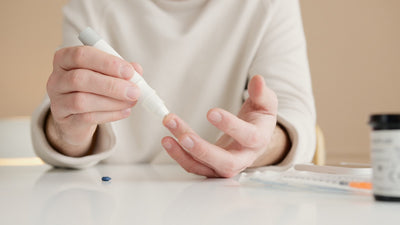Treatments for Mastitis
Treatments for Mastitis
By Jordan Berns
Mastitis is a painful condition that occurs when a plugged duct leads to breast milk stasis (the milk stops moving), or when an introduction of bacteria causes mammary glands to become infected. Breasts may grow red, hot, and uncomfortable with a lump forming at the sight. Plugged ducts and mastitis are associated with stopping breastfeeding earlier than the recommended six months to a year.
At home treatment
In its earliest stages, breast engorgement and mastitis can be treated at home. To begin, it’s always best to make sure you’re taking care of yourself and keeping comfortable. Staying hydrated and trying to get proper sleep is crucial to fighting any infection. Wearing loose fitting clothes and making sure your bra isn’t too tight can help prevent mastitis.
If you get mastitis, the best thing to do is continue expressing milk so you can avoid engorgement. Some engorgement is normal, especially 3-5 days after birth, but it should go down after that time period. Your breast milk is still healthy for your baby if you have a plugged duct.
Most antibiotics prescribed for breastfeeding mothers are safe, but we do know that they are detectable in mother's milk. When the milk becomes backed up it will express thickly, like a cheese. Your pain should dramatically decrease when a plugged duct is cleared. You can use an at-home mastitis test to help determine if antibiotics are necessary.
Minimize pain by placing a warm compress over the affected breast before nursing. After a nursing session, press a cool compress, like a bag of peas, over the infected breast.
When you begin to breastfeed, start the nursing session with the injured breast and angle your baby’s chin to the plugged duct to ensure optimal drainage. Your baby’s suck might help free the clog! Try several different latch positions. This can also help you find the position that lets the baby nurse with ease and empties out all sections of the breast. To ensure your latch position is optimal, seek the help of a lactation consultant.
Over-the-counter medications like Ibuprofen (Advil or Motrin) or acetaminophen (Tylenol), or Motrin can help, but always make sure you’re following your doctor’s instructions for taking the correct dosage while breastfeeding. Keep your doctor in the loop in regards to breast and nipple injury so they can help you to the best of their ability.
When should I see my doctor for mastitis?
If your mastitis doesn’t improve in two days, or your pain intensifies call your doctor. (Contact your doctor before the two days are up if you are feeling particularly unwell or spike a temperature of 101°F or higher.)
If not treated properly, mastitis can become a recurring problem. In some cases, mastics can lead to an abscess in the breast. This can sometimes needs to be surgically drained and may even need IV antibiotics. In even more extreme cases, septicemia or sepsis, can occur. This is potentially life-threatening and requires immediate medical treatment.
When you see your doctor, they will do a physical examination if mastitis is suspected. In special situations they might take a milk sample to ensure that there is no bacterial infection or even culture the nipple to assure there is no overlying fungal infection as well. Rarely, they will do a biopsy to ensure there are no traces of inflammatory breast cancer present.
Your doctor might prescribe you antibiotics to help fight the infection, but make sure to tell your healthcare provider that you are breastfeeding. Antibiotics can be expressed through breast milk.
Antibiotic free solutions to mastitis
If plugged ducts and mastitis continue to be a problem for you, you may want to ask your doctor or lactation consultant about lecithin supplements. Normally found in eggs, red meat, and organ meat (but lecithin is lower in saturated fats and cholesterol), lecithin is a phospholipid emulsifier. This means that it helps liquify fats, assisting the flow of clogged milk. There is no exact recommended dosage for lecithin, so make sure to ask your healthcare provider what a safe dose for you is.
If other treatment methods are not working, consider getting an ultrasound to help heal mastitis. Ultrasounds have been used to alleviate injuries since the 1940s, but only recently have they been used to help breastfeeding women nurse without pain. Ultrasounds on the breasts have been proven to increase blood flow to tissue, which can help support the course of prescribed antibiotics.
In a 2012 study, breastfeeding women with plugged ducts and mastitis were treated with ultrasounds. With an average of 3.3 ultrasound treatments after one day to one week, more than half of the women saw improvement with no negative side effects. These women also supplemented their treatment with therapeutic breast massages.
Breastfeeding is a beautiful, but sometimes difficult process. It protects against SIDS, asthma, and strengthens your baby’s immune system. For breastfeeding mothers, it can help combat obesity, high blood pressure, osteoporosis, and can even reduce the risk of breast and ovarian cancers. Mastitis is an uncomfortable and potentially serious condition, but with care and dedication, breastfeeding can be an enjoyable way to nourish and bond with your baby.
Sources:
https://www.ncbi.nlm.nih.gov/pmc/articles/PMC3437340/



